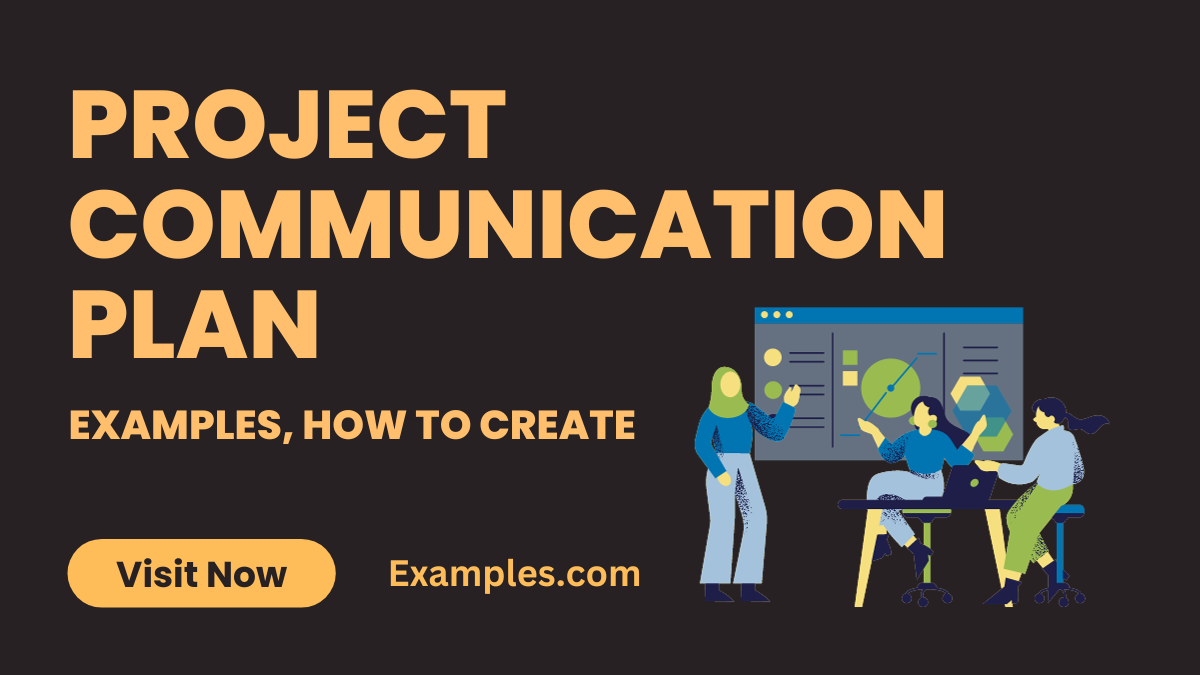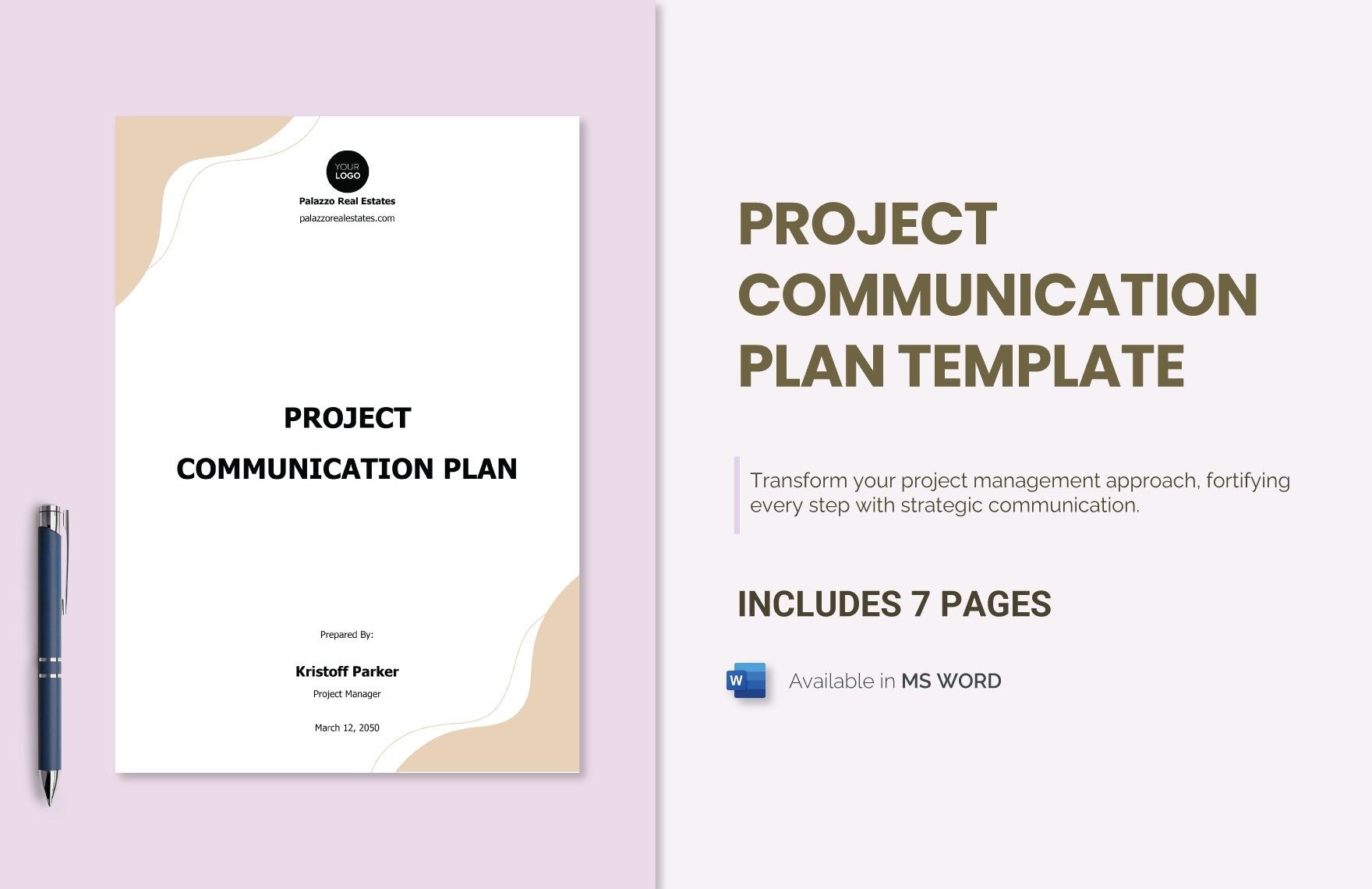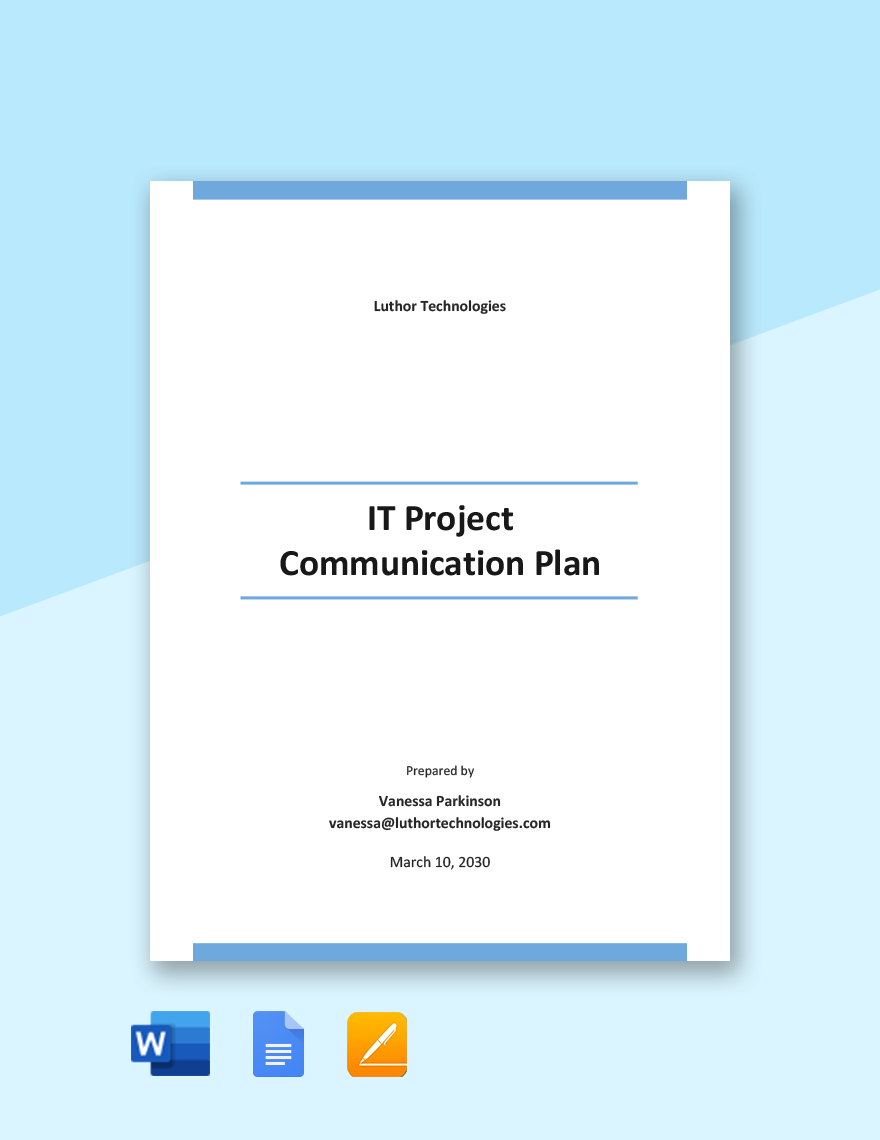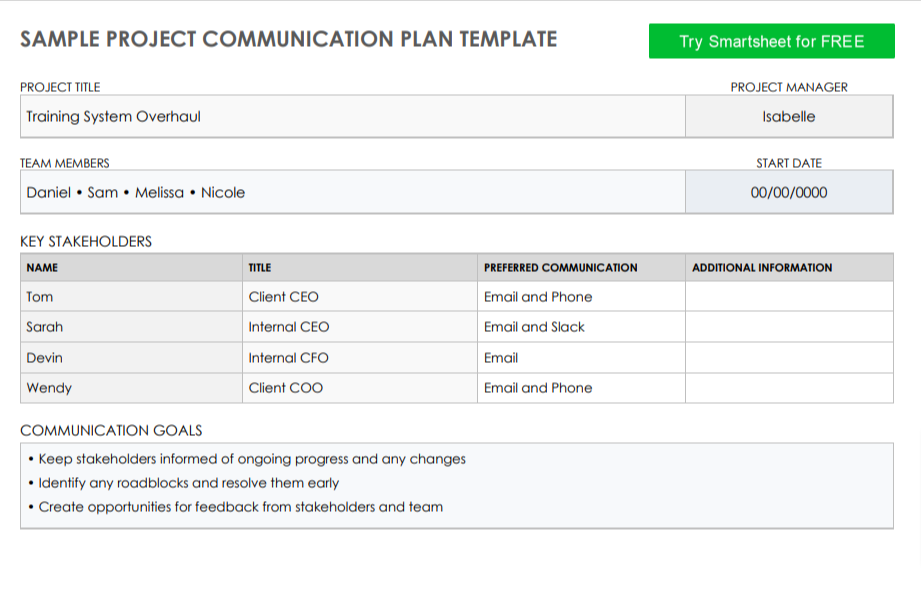12+ Project Communication Plan Examples to Download
A Project Communication Plan is an essential roadmap guiding all communication within a project. This guide provides comprehensive communication examples and strategies, detailing how to effectively convey project goals, updates, and changes to stakeholders. From choosing the right communication channels to setting clear timelines, it covers essential aspects like stakeholder engagement and feedback mechanisms. This guide is an invaluable resource for project managers and teams, ensuring that every aspect of project communication is clear, timely, and effective, leading to successful project execution.
Download Project Communication Plan Bundle
Project Communication Plan
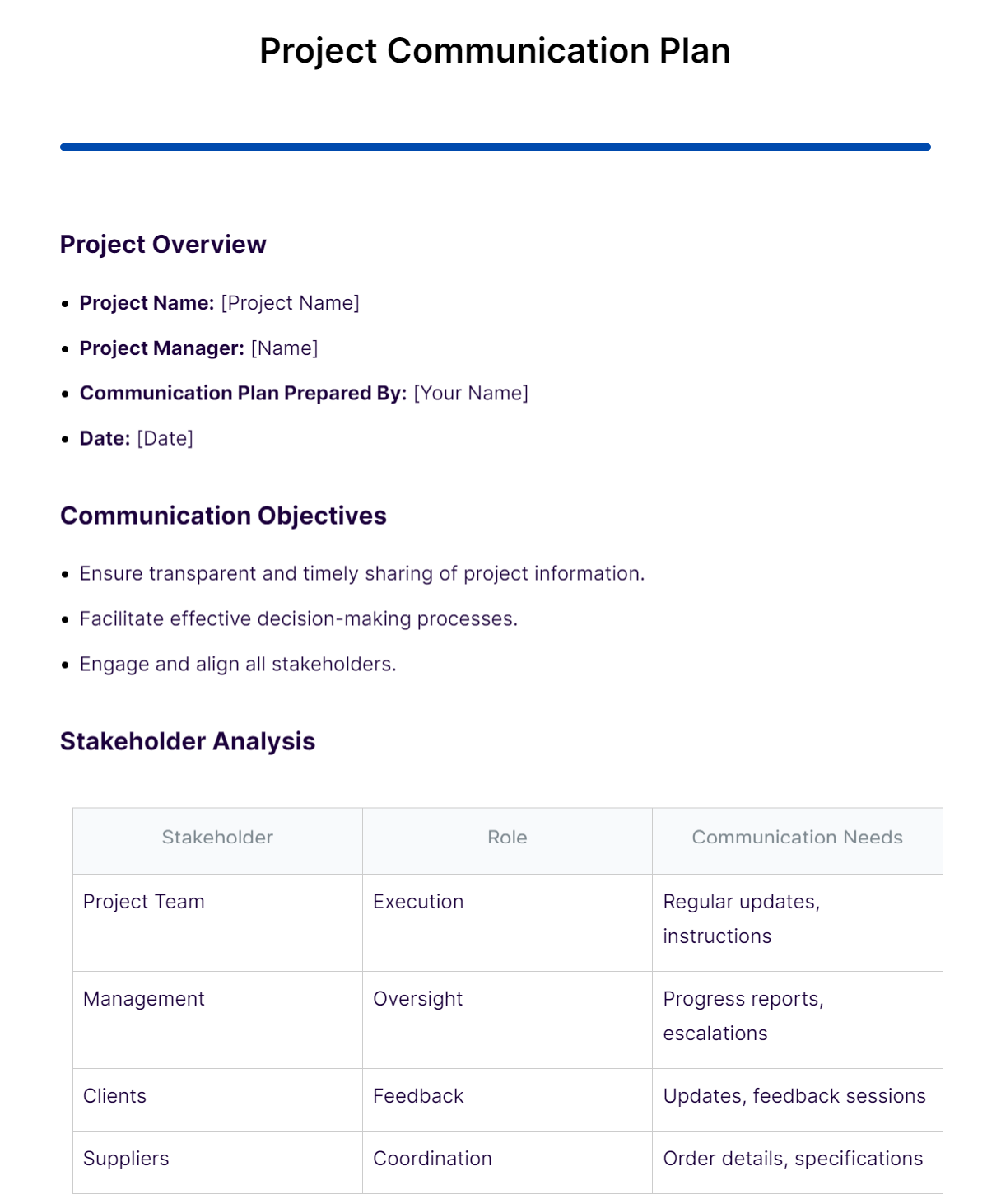
The Project Communication Plan on is a detailed template designed to guide project teams in creating an effective communication strategy. It includes sections on project overview, communication objectives, stakeholder analysis, communication tools and channels, and a communication schedule. The plan emphasizes the importance of transparent and timely information sharing, effective decision-making, and stakeholder engagement. It details various communication methods like email, meetings, reports, and dashboards, and outlines a schedule for regular updates, progress summaries, and detailed reports. Additionally, it incorporates mechanisms for feedback, an escalation process for addressing immediate and critical issues, document control with a centralized digital repository, and a review and update schedule to ensure the plan remains effective and relevant
Construction Project Communication Plan
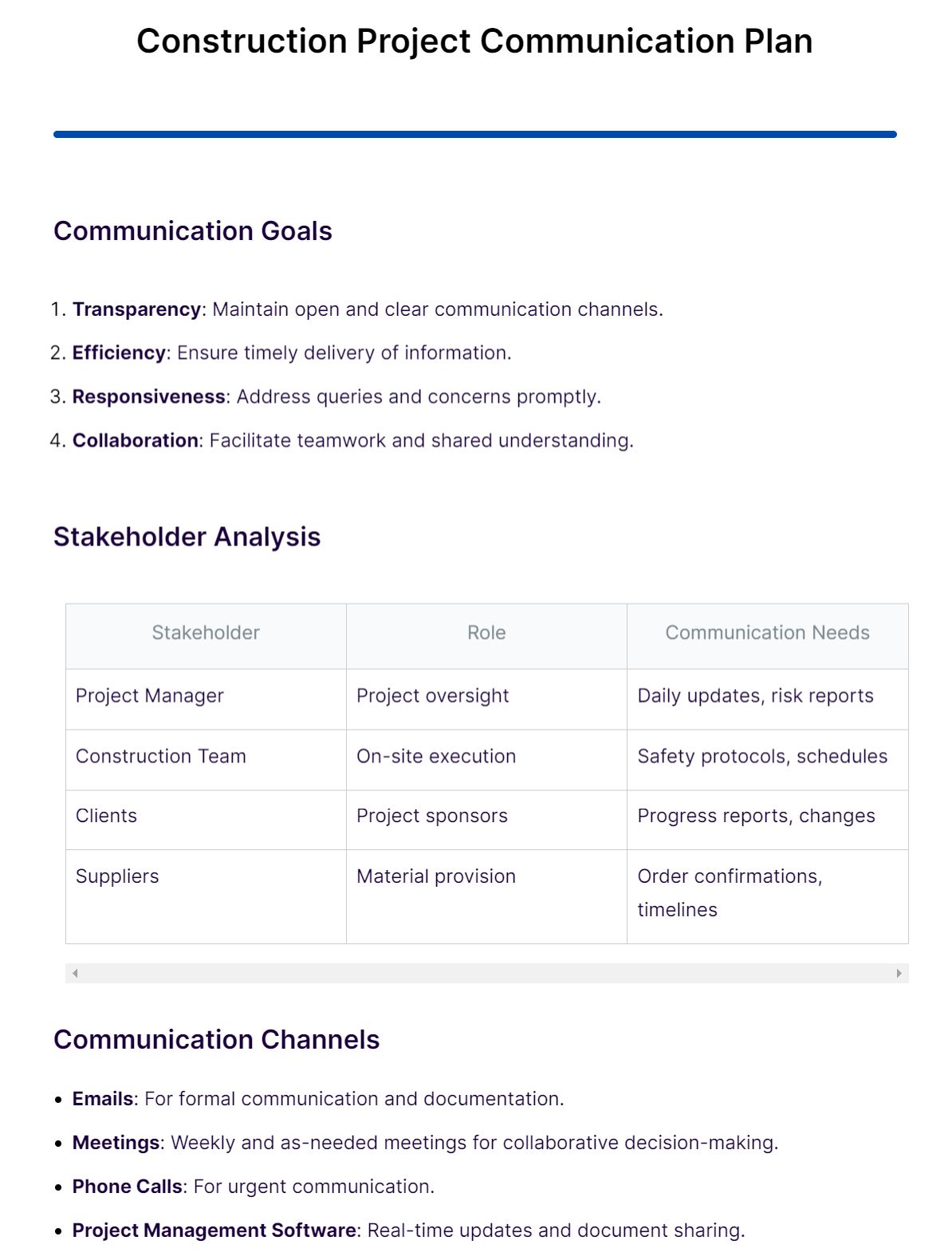
The Construction Project Communication Plan provides a detailed framework for effective communication management in construction projects. This plan focuses on goals like transparency, efficiency, responsiveness, and collaboration. It includes a stakeholder analysis, identifying the communication needs of project managers, construction teams, clients, and suppliers. The plan recommends various communication channels like emails, meetings, phone calls, and project management software, and presents a communication matrix detailing responsibilities, audience, frequency, and methods for different types of information. Additionally, it outlines an escalation process for addressing issues and incorporates regular reviews and feedback mechanisms to ensure all parties are well-informed and coordinated.
Project Management Communication Plan
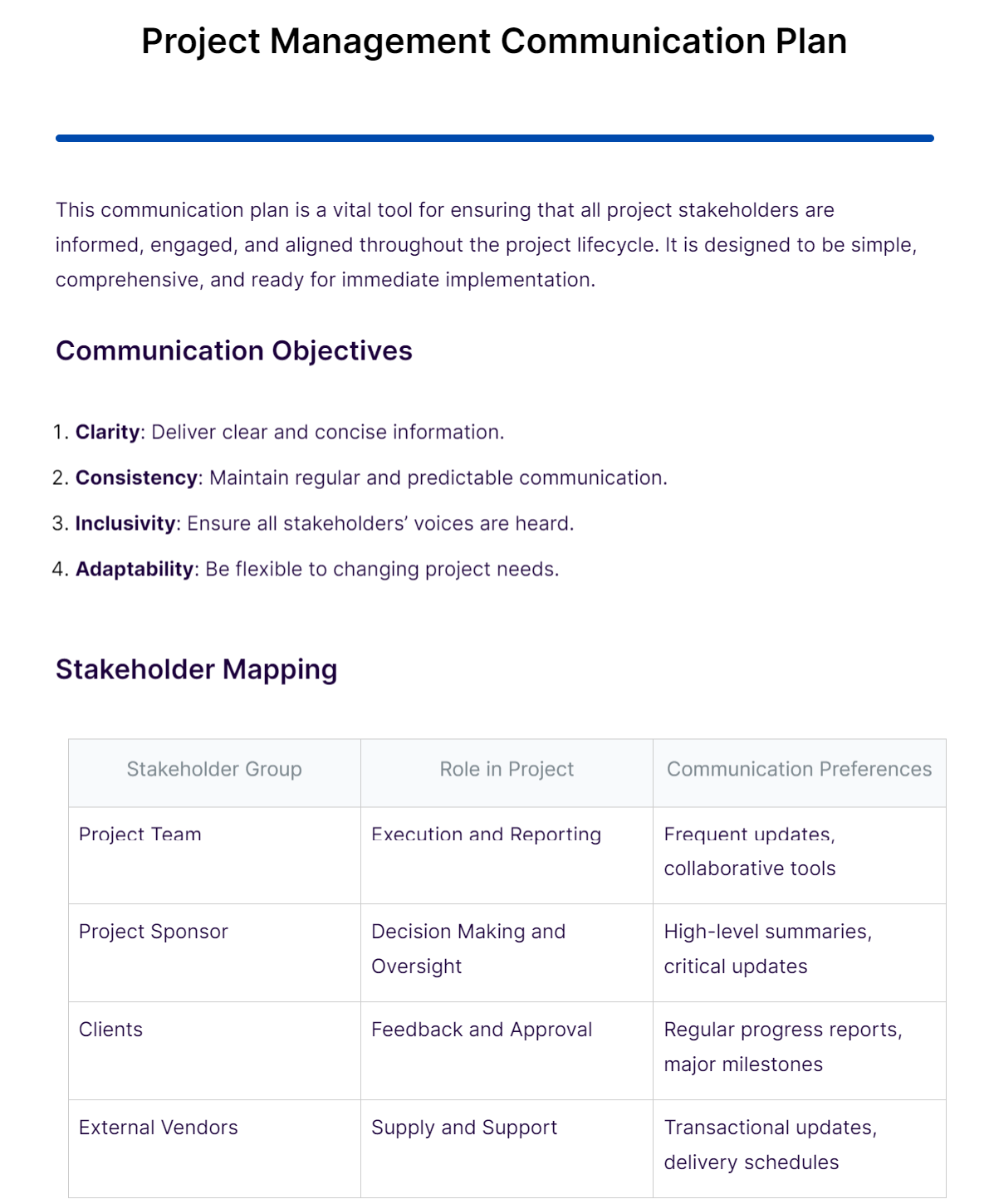
The Project Management Communication Plan Examples on is a comprehensive resource designed to ensure that all stakeholders in a project are well-informed, engaged, and aligned throughout its lifecycle. This plan is simple, thorough, and ready for immediate implementation, covering aspects such as clarity, consistency, inclusivity, and adaptability in communication. It includes detailed sections on stakeholder mapping, communication channels, schedules, feedback mechanisms, escalation protocols, and documentation. This guide is adaptable to various project sizes and types, emphasizing the importance of regular evaluation and adjustment of the communication process.
Project Communication Plan PMI
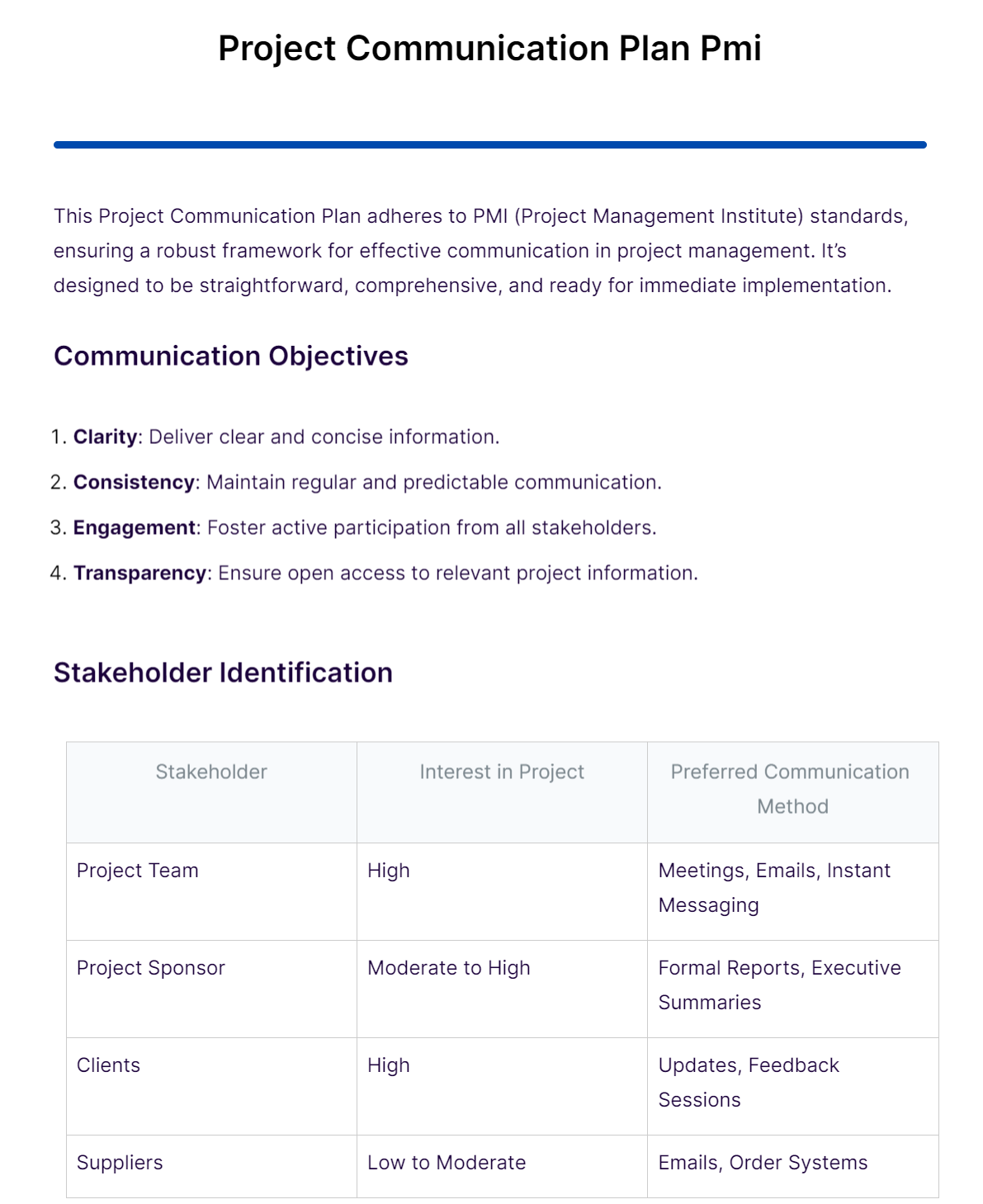
The Project Communication Plan PMI Examples page on presents a comprehensive guide adhering to PMI (Project Management Institute) standards, offering a robust framework for effective project communication. This plan is crafted for straightforward implementation and covers essential aspects like clarity, consistency, engagement, and transparency in communication. It includes detailed sections on stakeholder identification, preferred communication methods, various communication channels, and a communication matrix. The plan also addresses feedback and adjustment processes, risk communication, and the use of technology tools like Slack and Microsoft Teams for daily communication, as well as project management software like Asana and Trello for progress tracking.
Project Stakeholder Communication Plan
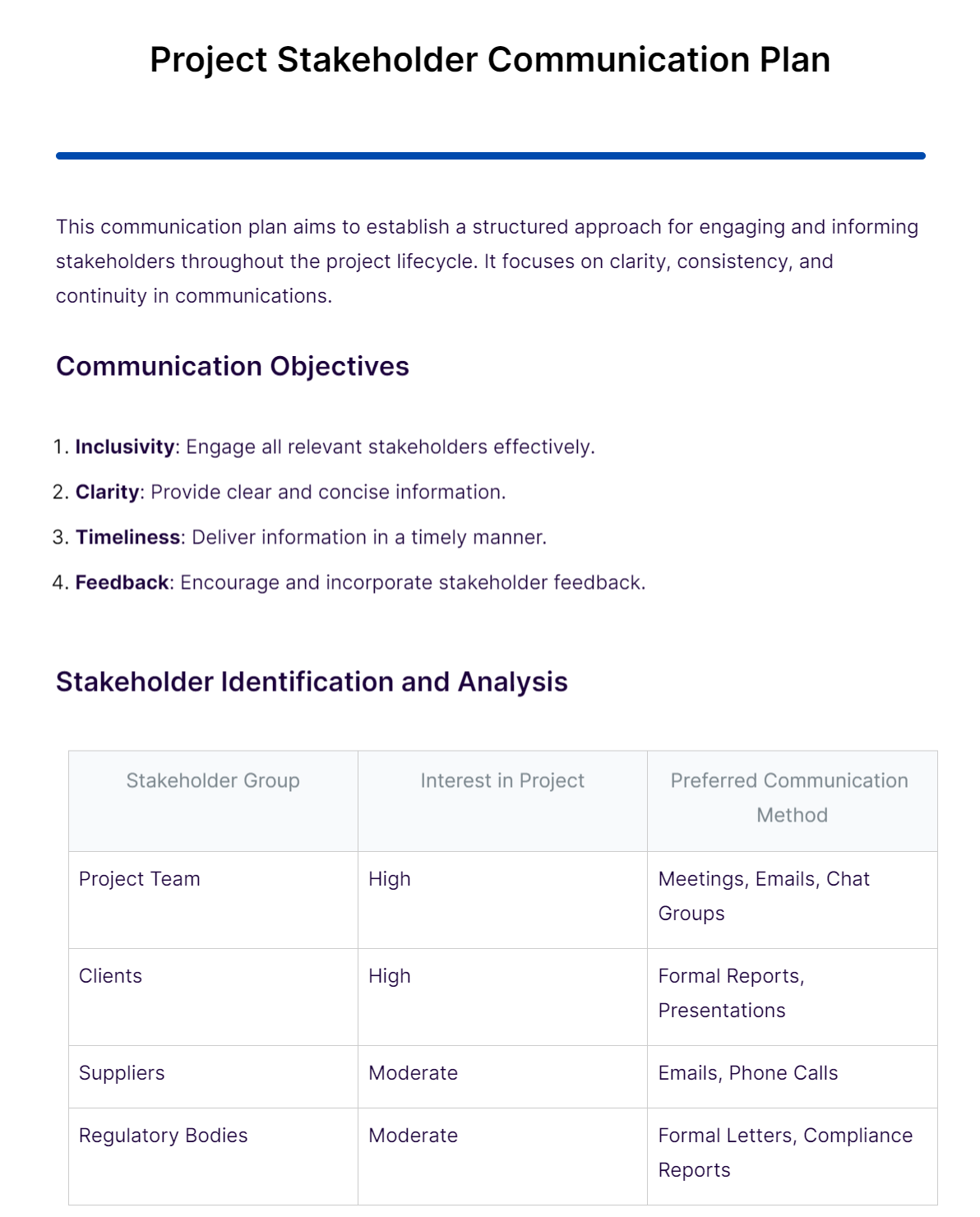
The Project Stakeholder Communication Plan Examples on is a detailed guide designed to establish a structured approach for engaging and informing stakeholders throughout a project’s lifecycle. It emphasizes clarity, consistency, and continuity in communication. Key sections include communication objectives like inclusivity and timeliness, stakeholder identification and analysis, various communication methods (e.g., meetings, emails, newsletters), and a comprehensive communication plan matrix. The plan also covers feedback and adjustment mechanisms, emergency communication protocols, and a review and update schedule, ensuring all parties are consistently informed and engaged.
Project Communication Plan Strategy Template
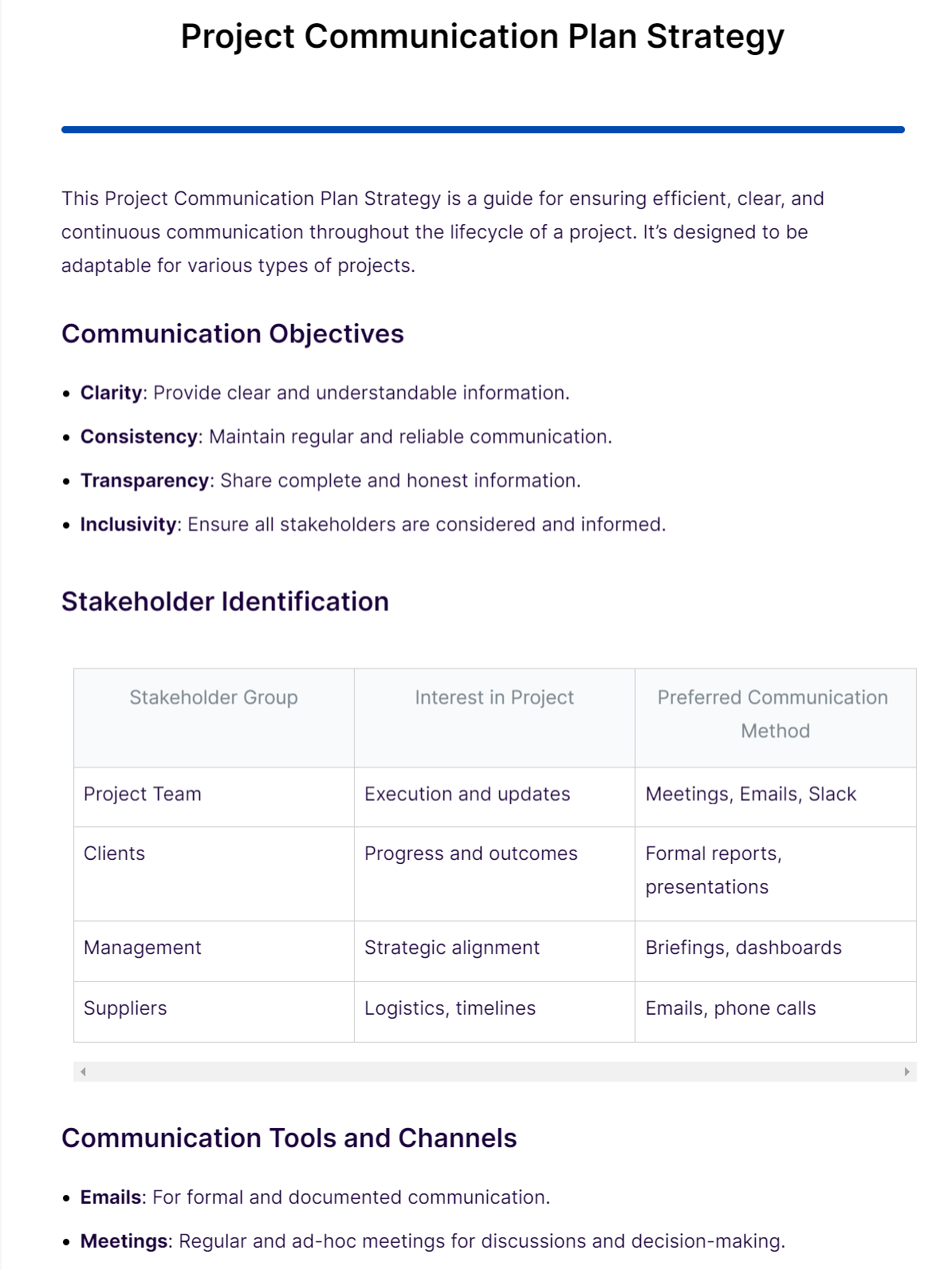
The Project Communication Plan Strategy is a detailed guide designed to enhance communication in various project types. It focuses on achieving clarity, consistency, transparency, and inclusivity in communication. The guide covers stakeholder identification, detailing preferred methods of communication for different groups, and outlines various tools and channels like emails, meetings, and project management software. Additionally, it includes a communication plan matrix, emphasizing the importance of feedback and adaptation, with scheduled reviews for assessing and aligning communication strategies with evolving project needs and goals.
Project Communication Plan Training
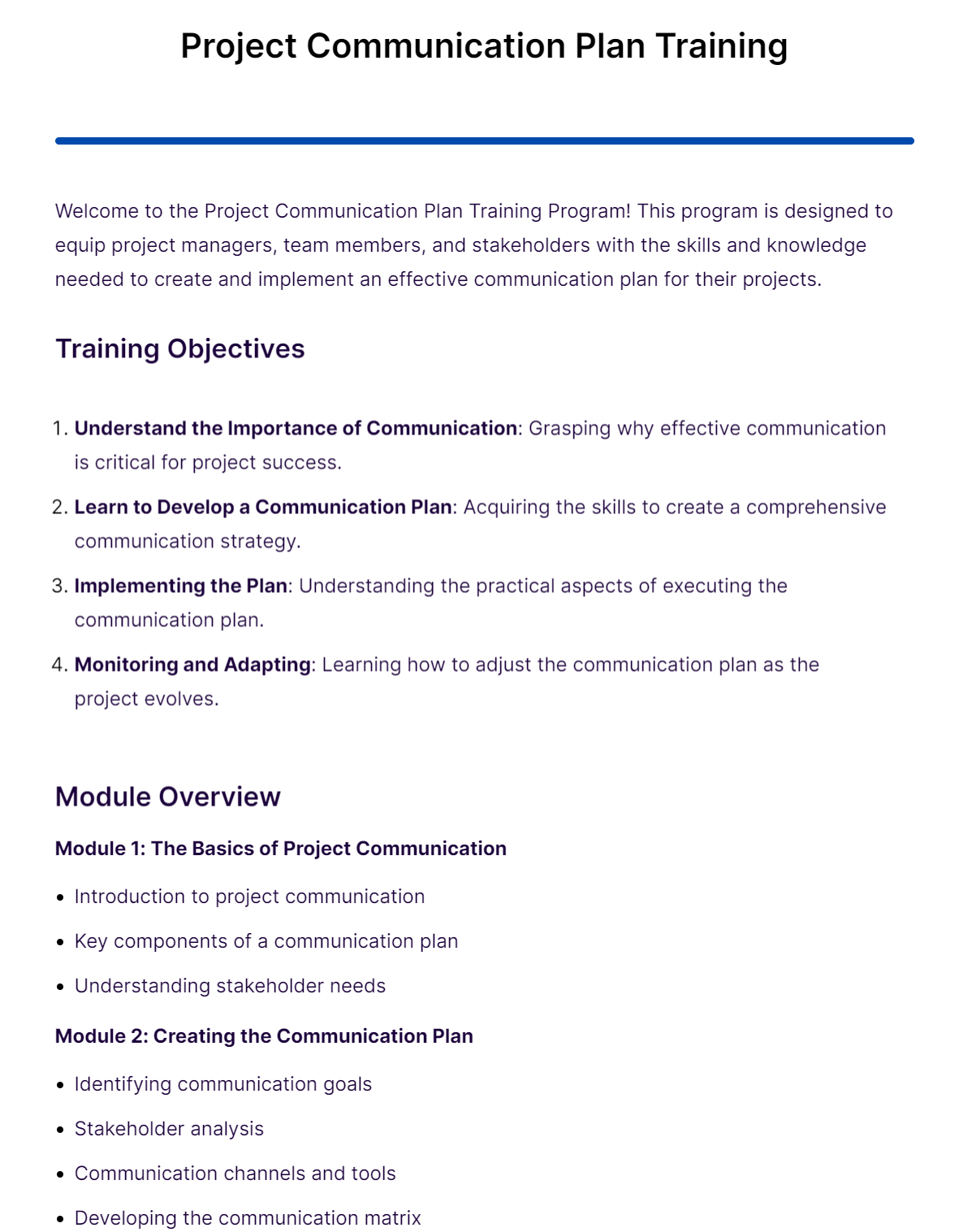
The Project Communication Plan Training Program is designed for project managers, team members, and stakeholders. It aims to impart skills for creating and implementing effective communication plans. The program covers understanding the importance of communication Skills, developing a communication strategy, implementing and adapting the plan, and includes interactive activities like case studies and role-playing. Resources provided include a training manual, templates, and access to online tools. The program ensures participants are equipped with practical skills for effective communication in project management.
Communication Plan in Software Project Management
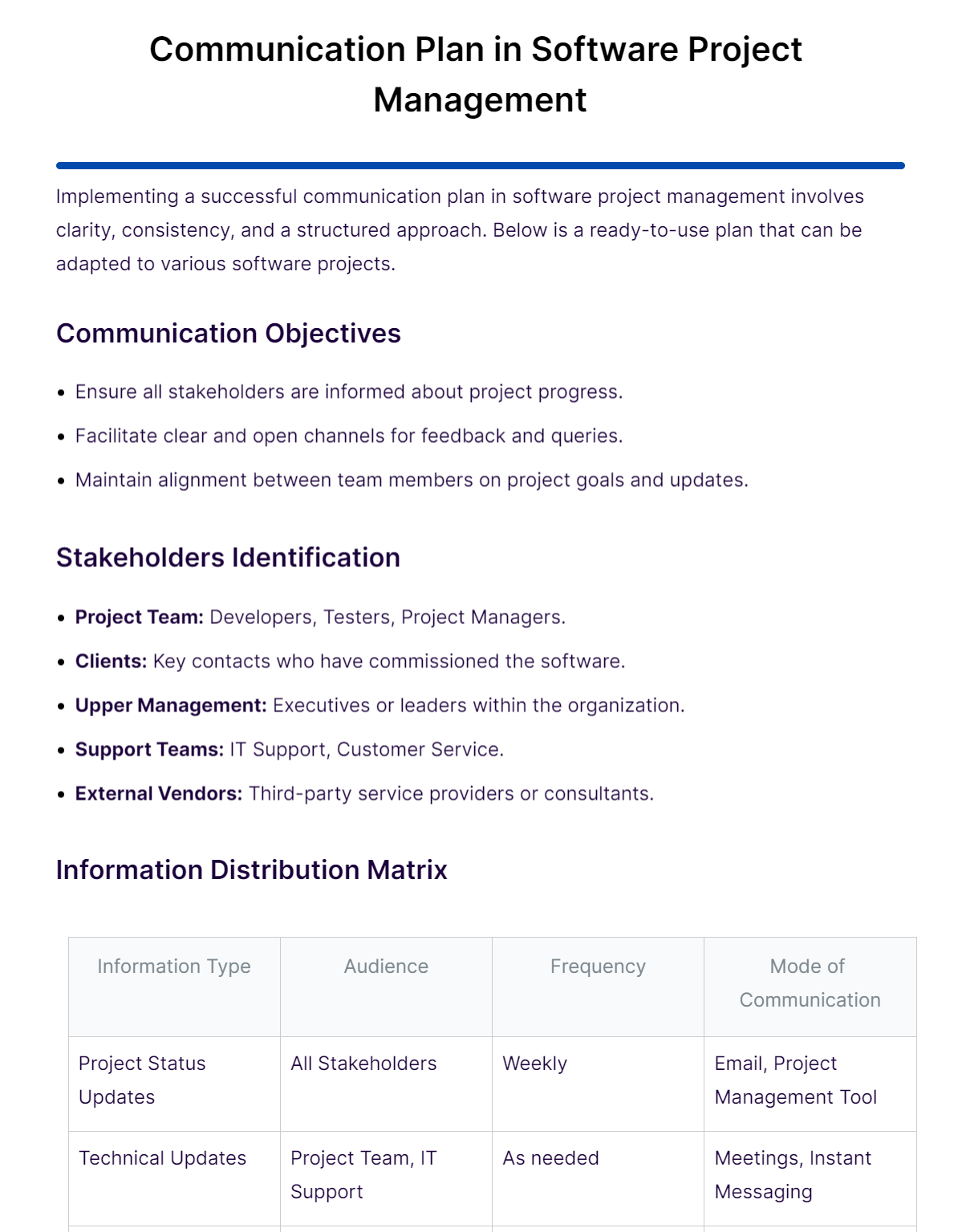
The article Communication Plan in Software Project Management a structured approach for effective communication in software projects. It emphasizes the importance of clear, consistent information flow among stakeholders, including project teams, clients, and upper management. The plan outlines various communication methods like email, project management tools, and meetings, and addresses the distribution of project updates, technical information, and feedback. It also highlights strategies for monitoring, feedback, and emergency communication, ensuring informed and engaged stakeholders for successful project execution
Agile Project Communication Plan
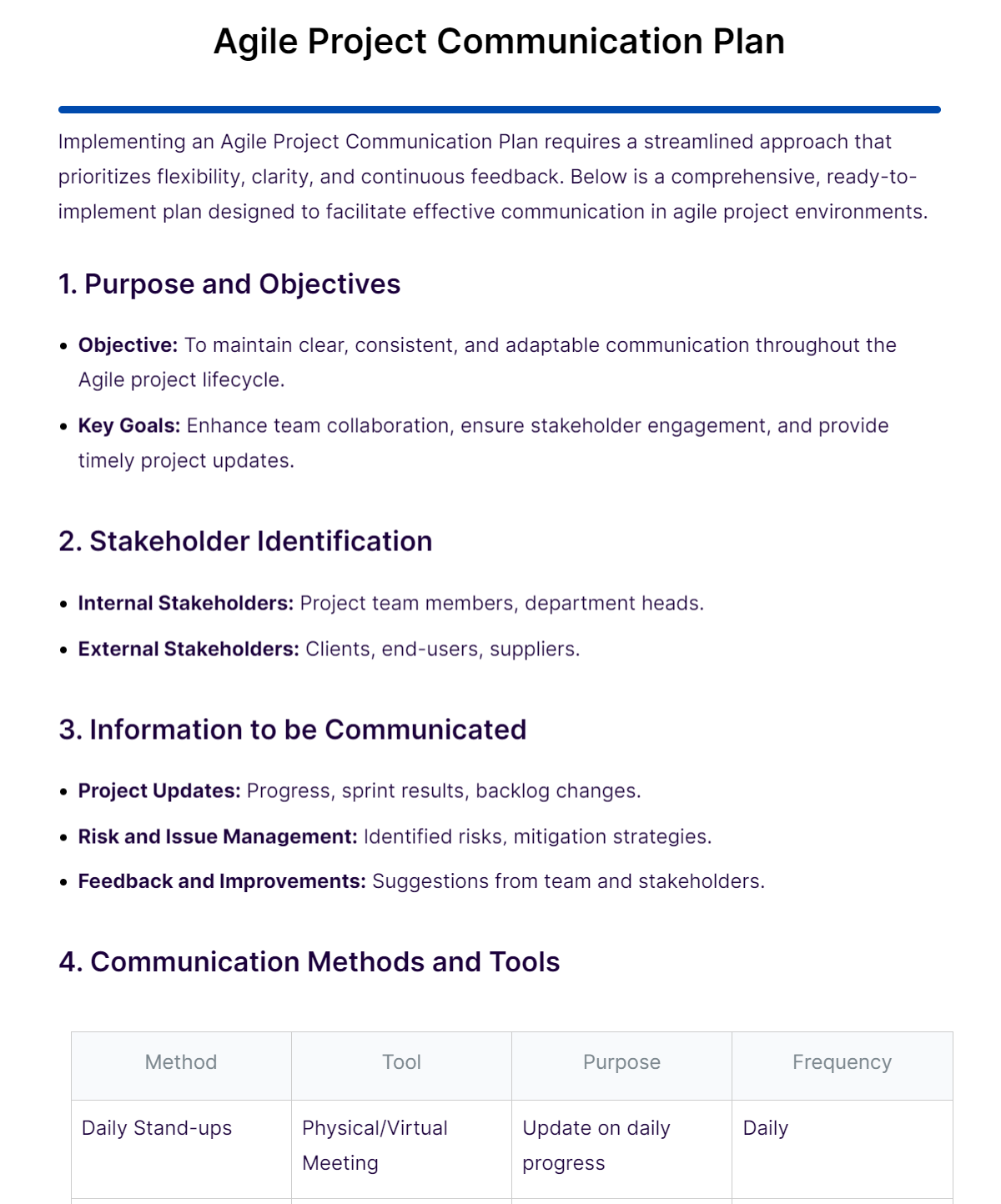
The Agile Project Communication Plan provides a detailed framework for effective communication in agile project environments. It outlines objectives for maintaining clear, flexible communication, identifies stakeholders, and details the information to be communicated. Various communication methods and tools are specified, along with responsibilities for different team roles. It includes feedback mechanisms, monitoring, and evaluation strategies, and presents a flowchart for visual aid, making it a comprehensive resource for ensuring engaged and informed team members throughout the project lifecycle.
Scrum Master Project Communication Plan
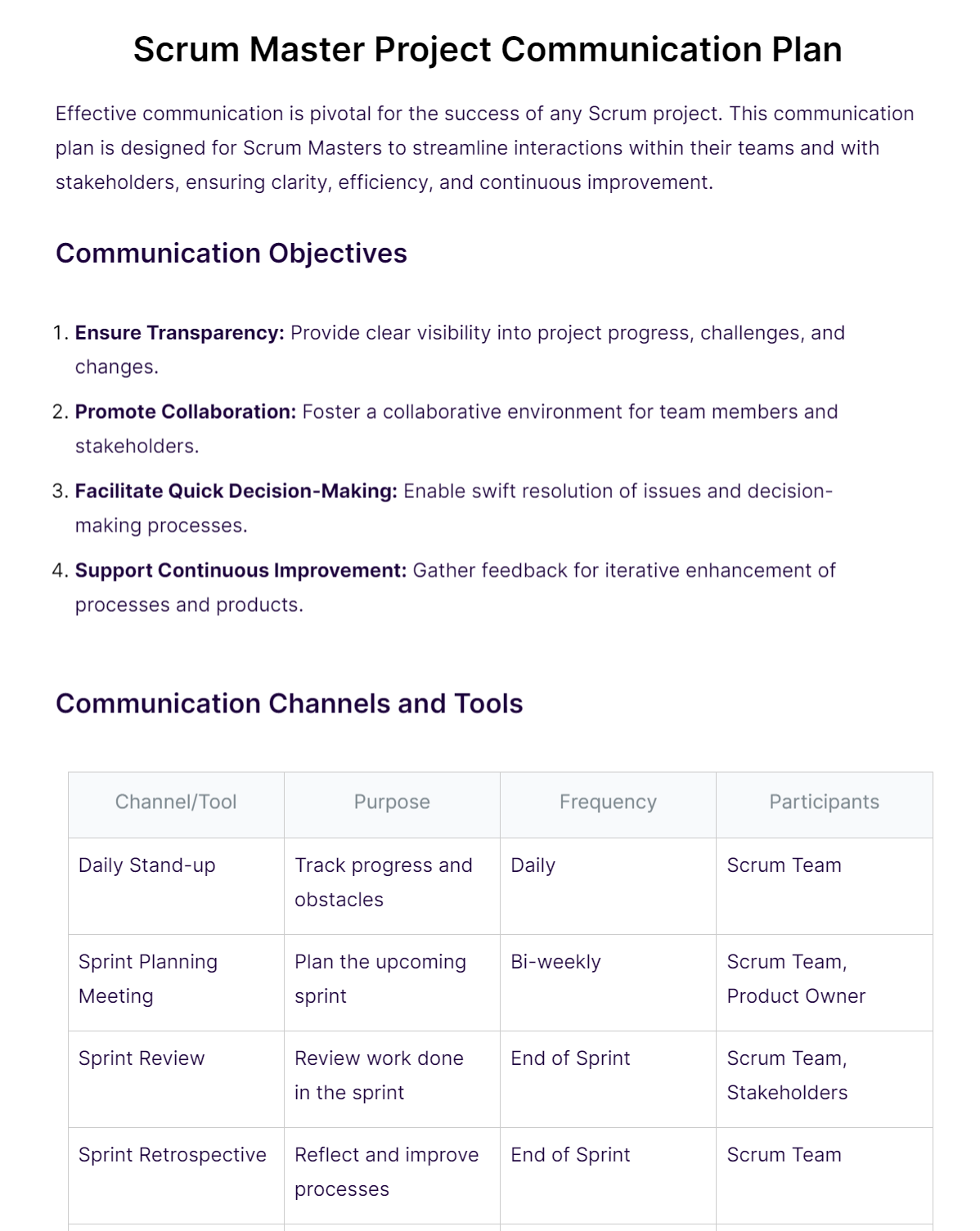
The “Scrum Master Project Communication Plan” on Examples.com is a comprehensive guide for Scrum Masters. It emphasizes effective communication for project success, outlining objectives like ensuring transparency, promoting collaboration, facilitating quick decision-making, and supporting continuous improvement. The plan details various communication channels and tools, including daily stand-ups, sprint planning, and stakeholder meetings, with specific agendas and frequencies. It also includes key performance indicators and strategies for feedback and continuous improvement, aiming to create a collaborative, transparent, and evolving project environment
Project Communication Plan Template in Word
IT Project Communication Plan Template
Project Communication Change Management Plan
DownloadSample Project Communication Plan Template
Importance of a Project Management Communication Plan
A Project Management Communication Plan is crucial for orchestrating team collaboration and driving project success. It streamlines the flow of information, ensuring that all team members and stakeholders are well-informed and engaged. This plan plays a vital role in aligning project objectives, mitigating misunderstandings, and boosting efficiency. It’s not just about exchanging information; it’s about fostering a shared understanding and commitment to the project’s goals.
- Weekly Team Meetings: Ensures consistent team alignment and progress updates.
“Our weekly meetings on Mondays at 10 AM will focus on progress and immediate priorities.” - Email Updates to Stakeholders: Keeps stakeholders informed and involved.
“Bi-weekly emails will be sent to update you on key project developments.” - Interactive Dashboard for Real-Time Updates: Offers a current view of project status and metrics.
“Refer to our interactive dashboard for the latest updates and performance indicators.” - Dedicated Project Communication Channels: Facilitates efficient and focused discussions.
“Please utilize our Slack channel for ongoing project discussions and queries.” - Risk Management Meetings: Addresses and strategizes around potential project risks.
“Join us monthly to strategize on potential risks and their mitigation.” - Client Feedback Sessions: Integrates client perspectives into the project lifecycle.
“Monthly sessions are scheduled for discussing your feedback and insights.” - Team Building Activities: Strengthens team cohesion and morale.
“Engage in our quarterly team-building activities to enhance our teamwork.” - Project Milestone Celebrations: Recognizes team efforts and achievements.
“Celebrating our milestones together acknowledges our hard work and success.” - Training Sessions for New Tools or Processes: Equips the team with necessary skills and knowledge.
“Participate in our training sessions to master new tools and methodologies.” - Emergency Communication Protocols: Prepares the team for efficient crisis management.
“Ensure familiarity with our emergency protocols for effective crisis response.”
How to Create a Project Communication Plan?
Creating an effective Project Communication Plan is essential for the success of any project. It outlines how project information will be communicated to stakeholders, ensuring everyone is on the same page and contributing to the project’s success.
1: Identify Your Stakeholders
Start by identifying all the stakeholders involved in the project. This includes team members, clients, sponsors, and any other parties with a vested interest in the project. Understanding their needs and expectations is crucial for effective communication.
2: Define Your Communication Objectives
Establish clear objectives for your communication plan. These objectives should align with the overall goals of the project and address the needs of your stakeholders.
3: Determine Communication Methods and Tools
Choose the most effective methods and tools for communicating with your stakeholders. This could include meetings, emails, reports, or project management software. The key is to select tools that are accessible and efficient for your audience.
4: Develop a Communication Schedule
Create a schedule that outlines when and how often communications will occur. This schedule should be flexible enough to accommodate changes in the project but structured enough to ensure regular updates.
5: Assign Roles and Responsibilities
Clearly define who is responsible for each aspect of the communication process. This includes who will be creating content, who will be distributing it, and who will be receiving it.
6: Establish Metrics for Success
Define how you will measure the effectiveness of your communication efforts. This could be through feedback surveys, engagement metrics, or meeting attendance rates.
7: Review and Adapt
Regularly review the effectiveness of your communication plan. Be prepared to make adjustments as the project progresses and as you receive feedback from stakeholders.
How to Implement a Project Communication Plan?
Effective communication is the cornerstone of successful project management. Implementing a Project Communication Plan is vital for ensuring all stakeholders are aligned and informed throughout the project lifecycle. This guide provides a comprehensive approach to implementing a communication plan, essential for project managers, team members, and stakeholders.
- Identify Stakeholders and Communication Needs: Before drafting your plan, identify all project stakeholders. This includes the project team, sponsors, clients, and any other parties affected by the project. Understanding their needs, expectations, and preferred communication methods is crucial. Stakeholders vary in their requirements for information frequency, detail, and format.
- Develop Clear Objectives and Messages: Define the objectives of your communication plan. What are the key messages you need to convey? Make sure these objectives align with the overall project goals. Clarity in messaging prevents misunderstandings and ensures everyone is on the same page.
- Choose Appropriate Communication Channels: Select communication channels that best suit your stakeholders. Options include emails, project management tools, meetings, and conference calls. The choice depends on the complexity of the message and the preferences of the audience. Remember, the goal is effective and efficient communication.
- Create a Communication Schedule: Establish a regular communication schedule. This can include weekly status reports, monthly project reviews, and immediate updates on critical changes. Consistency in communication fosters trust and keeps stakeholders engaged and informed.
- Assign Responsibilities: Clearly assign communication responsibilities within your team. Who will send out updates? Who will respond to stakeholder queries? Ensuring everyone knows their role in the communication process avoids overlaps or gaps in information sharing.
- Feedback and Adaptation: Implement a feedback mechanism to gauge the effectiveness of your communication. Be open to adapting your approach based on stakeholder feedback. Continuous improvement in communication methods enhances overall project success.
- Document and Review: Keep a record of all communications related to the project. This documentation serves as a reference and helps in resolving any disputes or misunderstandings. Regularly review your communication plan to ensure it remains relevant and effective.
What are the Components of a Project Communication Plan?
A Project Communication Plan is a vital blueprint guiding the communication strategies within a project. It ensures that all stakeholders are informed and engaged throughout the project’s lifecycle. Understanding the components of a project communication plan is crucial for effective project management.
- Purpose and Objectives of Communication: This section outlines the core purpose of the communication plan. It includes the main objectives of communication in the context of the project. This might involve ensuring transparency, facilitating collaboration, or providing regular updates to stakeholders.
- Stakeholder Identification and Analysis: Identifying and analyzing stakeholders is key. This involves listing all individuals, groups, or organizations that may affect or be affected by the project. Understanding their needs, interests, and communication preferences is crucial.
- Information to be Communicated: This part specifies the type of information that will be communicated. It includes project updates, milestones, risks, and any changes in the project scope or timeline.
- Communication Methods and Tools: This component outlines the methods and tools for communication. It ranges from traditional meetings and email updates to modern project management software and social media tools.
- Frequency of Communication: Determining how often communication should occur is essential. This could be daily, weekly, or monthly, depending on the project’s needs and stakeholders’ expectations.
- Responsibility for Communication: Assigning who is responsible for each type of communication ensures accountability. It clarifies who will send updates, respond to queries, and manage communication tools.
- Feedback Mechanisms: Incorporating feedback mechanisms allows stakeholders to provide input or raise concerns. This can be through surveys, comment sections in project management tools, or regular feedback meetings.
- Monitoring and Evaluation: This final component involves monitoring the effectiveness of the communication plan and making adjustments as needed. It includes evaluating whether the communication objectives are being met and how stakeholders are engaging with the project.
In the realm of project management, the significance of communication cannot be overstated. Effective communication is the cornerstone of successful project management, as it ensures that all stakeholders have a clear understanding of the project’s goals, status, and any issues that may arise. This is not only about exchanging information but also about ensuring that it is appropriately interpreted and understood by everyone involved.
One of the key aspects of effective communication in project management is the development of a comprehensive communication plan. This plan should outline how information will be shared among project team members, stakeholders, and sponsors. The Project Management Institute provides an insightful exploration of this topic, emphasizing the need for project managers to be skilled in both verbal and non-verbal communication. According to PMI, effective communication contributes significantly to project success, reducing the risk of project failure linked to miscommunications and misunderstandings.


